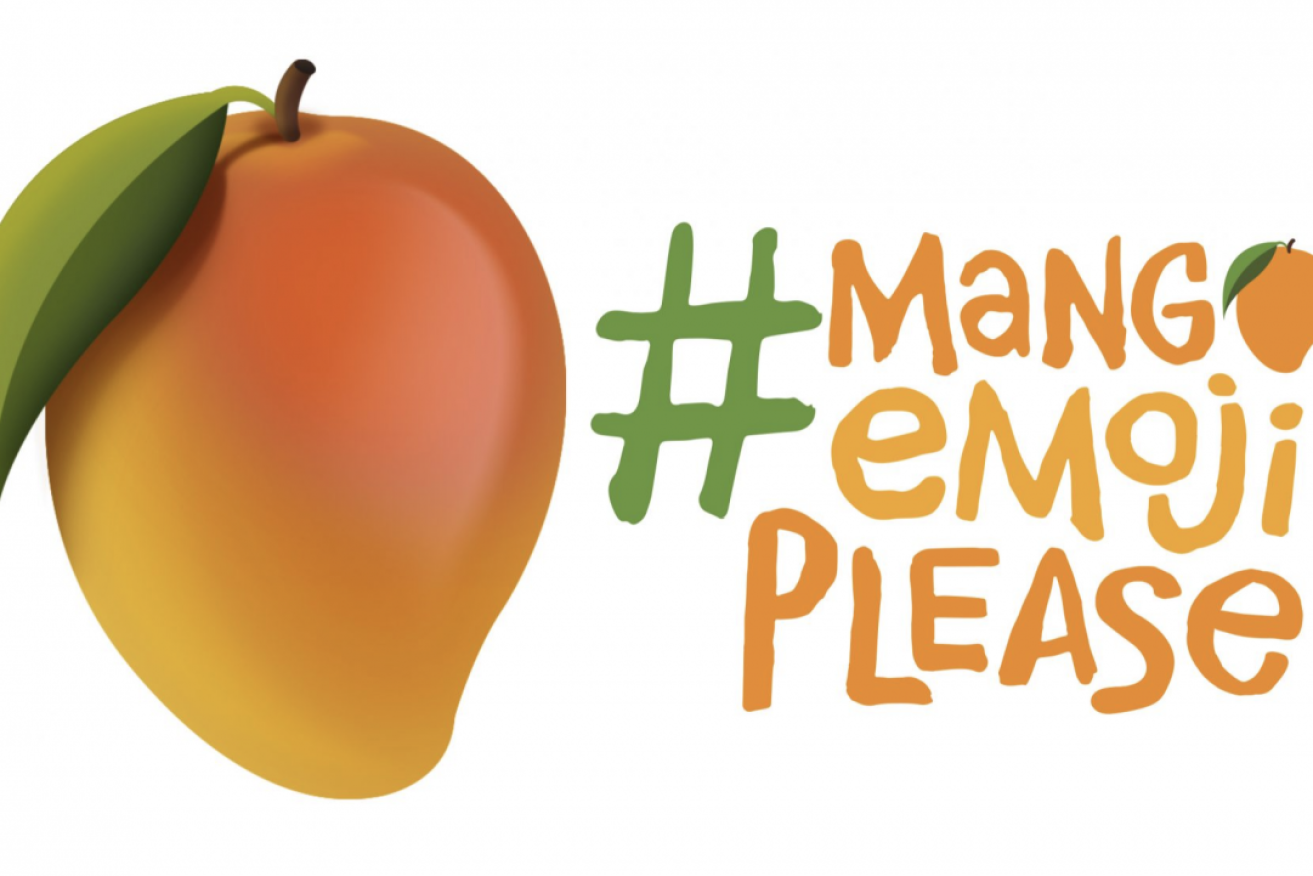How Aussie mango farmers won over the Silicon Valley emoji mafia


The new mango emoji is set to be here in June.
The Australian mango industry is celebrating a marketing victory this week, after it successfully lobbied the international emoji board to create a globally accepted mango emoji.
From June onwards, smartphone users and social media addicts around the world will be able to send and receive mango emojis to complement the pineapples, avocados, watermelons and kiwi fruits they can already send and receive.
The mango emoji is one of 157 new emojis set to be launched later in the year. A kangaroo emoji is also among them.
This may sound like a bit of a novelty story, but there’s more to it than meets the eye – and the more you dig, the more you realise what an achievement it was to get the mango emoji created.
What is an emoji really?
Behind the colourful, jovial, lighthearted chaps we fire at each other through cyberspace at a rate of six billion a day, there lies a complex, rather less colourful world of code.
Take the poo emoji, as seen on Apple iPhone:

This may look like a cheerful, good-natured turd to you and me, but to your phone or tablet or whatever it is actually a series of numbers.
When you send the happy poo to your mum via your iPhone, it travels through the ether not as a poo, but as those numbers. Your mum’s Samsung phone receives those numbers, recognises them to mean ‘poo’, and accordingly presents them to her as exactly that.
Here is the Samsung poo:

As you can see, it looks different from the Apple poo – less at ease with the world. That’s because, while the code behind each poo is identical, every tech company is at liberty to design the poo the way it wants. The dopey Facebook poo looks different again.

The same applies to every emoji in existence. Each has a set code that every half-decent tech product or platform can read, understand and turn into an image.
Who sets these common codes?
The international body that decides which symbols get their own special emoji code is called the Unicode consortium.
This is a Silicon Valley-based not-for-profit organisation of tech boffins controlled by a group of some of the biggest (mostly US) tech names.
The full members of the Unicode consortium are Apple, Facebook, Netflix, Microsoft, Google, IBM, Adobe, Huawei, SAP, Oracle, Shopify and the government of … Oman (?!).
Unicode does a lot more than set emoji codes. Its main purpose is to standardise and expand codes for all the languages of the world. Emojis were a bit of an afterthought.
How Unicode decides on new emojis
Every year, the Unicode emoji board calls on the public from around the world to propose new emojis. It is absolutely inundated with submissions, which it must whittle down to the best (in this year’s case) 157.
Submissions must contain an original design for the emoji. They must also prove there is real demand for it, and that it has a cultural relevance beyond its literal meaning.
Elisa King of Hort Innovation, the Australian grower-owned organisation that made the submission for the mango emoji, told The New Daily that the case for a mango emoji was overwhelming.
“When you do a Google search, the mango is one of the most searched-for fruits – more than the watermelon, more than the peach, more than the pineapple. And they’ve all got emojis already.”
She also said #mango was used almost three times as often as #peach on social media.
Hort Innovation also got some traction with its #MangoEmojiPlease social media campaign.
Mango fight fruitful, redheads light up as Unicode raises thumb for emojis. The mango industry has spent the last 18 months campaigning for a mango emoji, with the hashtag #MangoEmojiPlease attached to most of Australia’s mango marketing. https://t.co/wQpMdSNRXn #mango #emoji😀 pic.twitter.com/sfyonfCVop
— Vintuitive⚡️🌐 Website Development & Promotion (@Vintuitive) February 8, 2018
All this seemed to tick the demand box. But what about cultural significance?
Hort Innovation’s eight-page submission argued that the mango was a symbol of summer in Australia. But the real weight came from the fruit’s significance in India, the second most populous country in the world.
“In India the mango is the king of fruit, the fruit of the gods. It symbolises wealth, fertility and immortality,” Ms King said.
The emoji board was convinced. In fact, Ms King said Unicode told them it was one of the best submissions they’d ever received.








